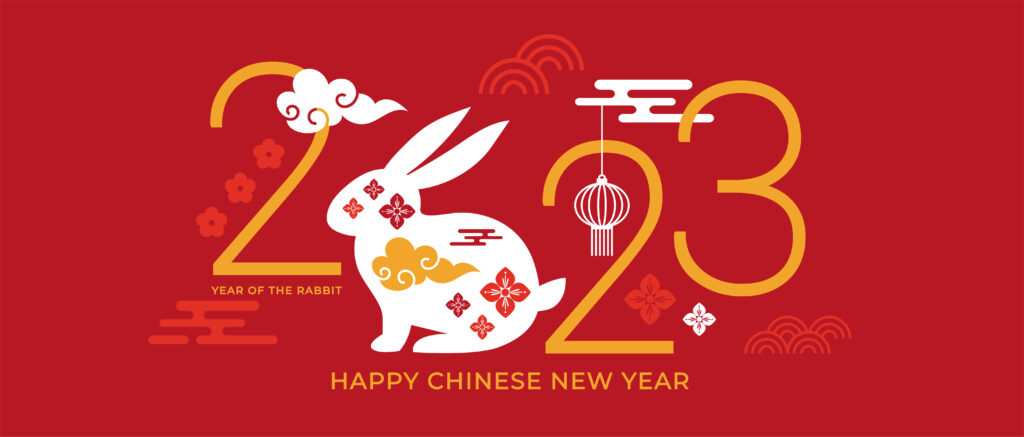Turn to Jiangnan Tea Region to Celebrate Chinese New Year and National Hot Tea Month
We fully embrace January for several reasons. For one, we are Coloradans, and our state understands how to appreciate snow. Ski season really gets going in the first month of the year. But January also is National Hot Tea Month; naturally, this pleases us immensely. And Chinese New Year, an enormously popular holiday in China, always gets started in January. As Chinese New Year follows the lunar calendar, meaning the new moon dictates when the month begins, it takes place sometime between January 21 and February 21. This year, Chinese New Year begins on Sunday, January 22, and ends on February 9. It will be the Year of the Rabbit.
The Rabbit symbolizes luck and patience, suggesting that 2023 will ripen qualities that the previous year (that of the Tiger) lacked, such as success and peace.
As China is the birthplace of tea, and this month Chinese New Year begins, we aim to explore and promote the teas of China across this National Hot Tea Month — January.
Chinese New Year and Tea

Most Chinese people sip hot Camellia sinensis every day of the year. The beverage, which Chinese have savored for thousands of years, serves as a foundation of Chinese culture. Unsurprisingly, it figures into Chinese New Year.
One tradition involves a tea ceremony. On the first day of Chinese New Year, younger generations in a family serve sweet tea to older generations. For example, parents of young children will serve their parents (who are their children’s grandparents). And the littlest ones in the family serve tea to their own parents. Following the tea service, family members then offer well wishes for the year, and those receiving tea hand red envelopes with money inside to the younger generations, to symbolize prosperity.
Jiangnan Region to Begin

China supports four main tea-growing regions, all of which border one another in southern and central parts of the country: Jiangbei, Jiangnan, Huanan and Xinan.
We begin with Jiangnan, one of the epicenters of Chinese tea production. About two-thirds of all Chinese tea is grown in Jiangnan, thanks an ideal climate that involves distinct seasons and an abundance of rainfall as well as mountains that permit cooler air when temperatures in valleys can be scorching.
Densely populated, highly fertile, rich with culture and sporting the most successful economic development in China, Jiangnan is famous for its silk and handicrafts. Some of China’s most cosmopolitan cities, like Shanghai, are in Jiangnan.
While Jiangnan tea farmers grow a diversity of superb teas, the region is best known for its green teas. Consider the trio of Jiangnan green teas discussed here as an introduction to this region’s wealth of tea.
Jiangnan Teas: Dragon Well Superior Green

Dragon Well, also called Long Jing, is probably the most famous of all Chinese green teas. For many years it was a tribute tea, and enjoyed exclusively by royal families. Fortunately, it now is available to the rest of us!
Dragon Well yields a golden brew with a distinctive nutty aroma and full, round flavor. It’s also quite healthy: Dragon Well contains the highest concentration of catechins (antioxidants) and among Chinese green teas.
If you are looking for a way to celebrate Chinese New Year, or to participate in National Hot Tea Month, or just to savor an especially outstanding green tea, Dragon Well Superior is an excellent choice!
Jiangnan Teas: Organic Bi Luo Chun Green Tea

Meaning “Jade Curly Spring Tea” in Chinese, Bi Luo Chun grows alongside plum and bayberry, all of which flower profusely in spring. The beautiful tea, from Xishan Island in Jiangsu Province, is renowned for its delicate appearance, floral aroma and intricate, youthful flavors.
Jiangnan Teas: Organic Chrysanthemum Green Tea

One thing is for sure about Chinese New Year: People will feast! In China, it is the rough equivalent of the holiday season in the United States and much of Europe, when people celebrate and entertain with more frequency and gusto than the rest of the year.
With excessive feasting comes at least one downside: indigestion. To help you achieve a winning Chinese New Year, we suggest our Chrysanthemum Green Tea, made from sencha tea that is grown in Jiangnan.
Yes — sencha. The vast majority of sencha is grown in Japan, but Chinese tea farmers also raise tea that gets turned into sencha. And this green tea blend begins with Chinese sencha, and then incorporates the flower chrysanthemum, along with peppermint and rose petal.
It’s delicious, and a digestion partner.

